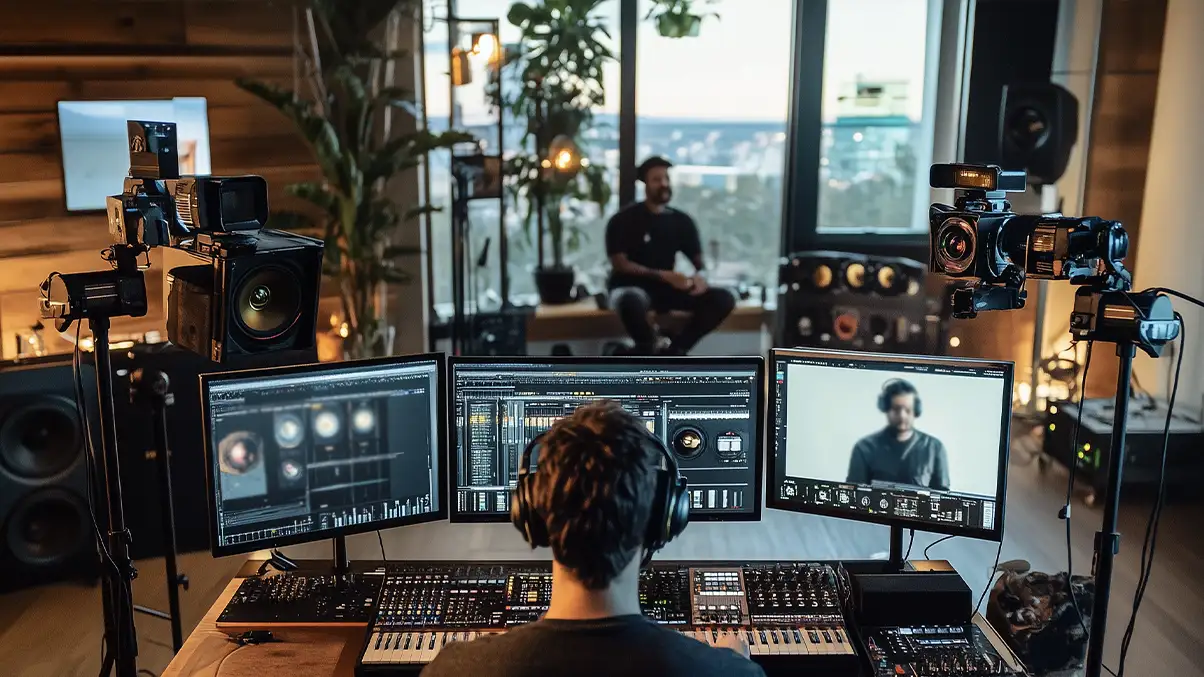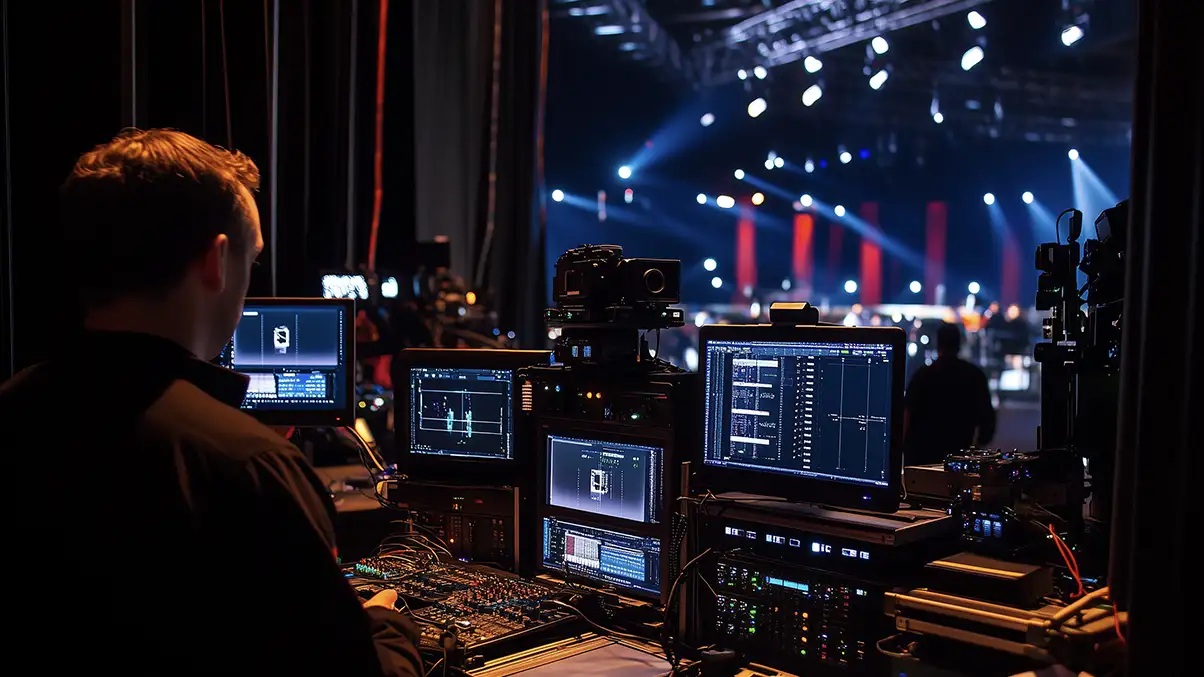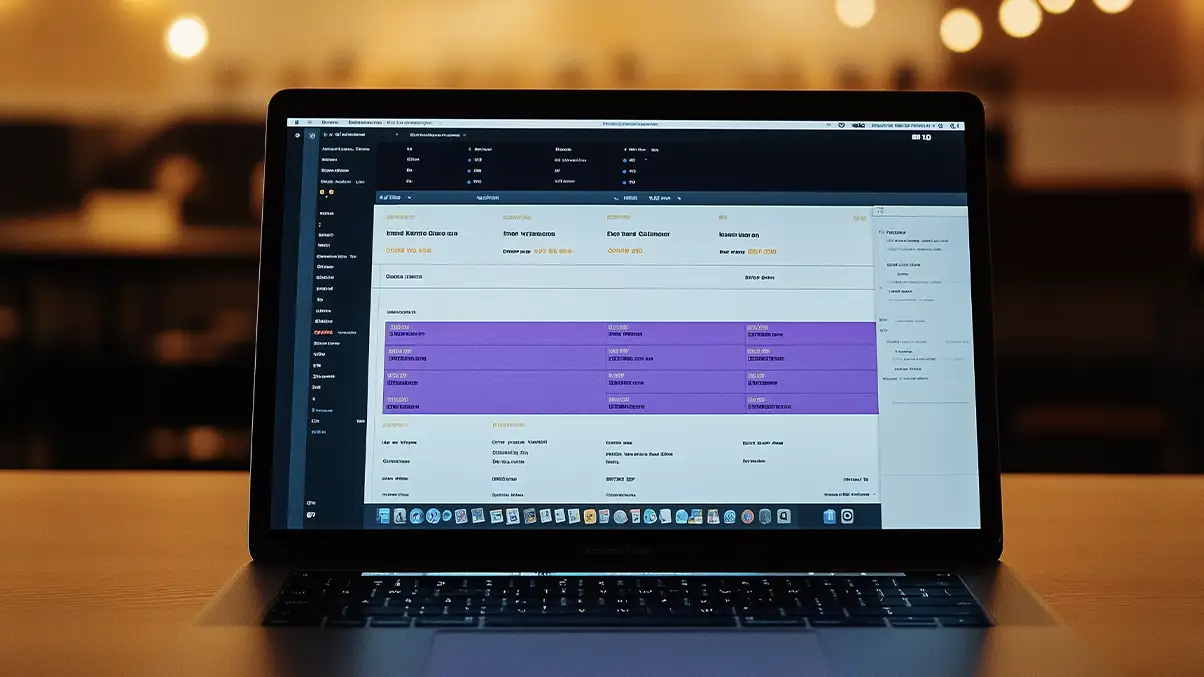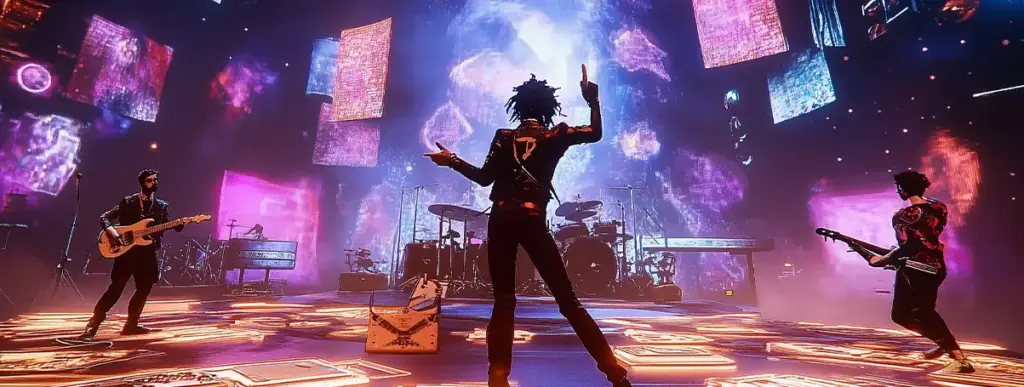The music industry continues to adapt with VR platforms, introducing new ways for creators to connect with their audiences worldwide. Virtual performances have changed how artists produce and distribute live music experiences, reducing geographical barriers and creating new revenue opportunities for musicians at any career stage. As platforms expand, the popularity of virtual live performances grows, offering creators production possibilities that differ from traditional concerts in technically innovative and financially advantageous ways.

What Are Virtual Performances and How Do They Work?
Virtual performances are live musical events performed in a the digital space, allowing audiences to attend from anywhere in the world. Unlike traditional concerts requiring physical venues, virtual live performances take place entirely online, accessible through computers, smartphones, or specialized devices. This format gained significant attention during global lockdowns but has since established itself as a continuing option in the entertainment landscape.
The foundation of virtual performances is streaming technology. The artist’s live performance is recorded in high definition, then distributed to viewers in real time via dedicated video platforms. Current streaming technologies support HD video, spatial audio, and real-time interaction, creating a multisensory experience for the audience. Most virtual live performances utilize multi-camera setups with professional lighting and sound engineering. Behind the scenes, a technical team manages the production elements, ensuring smooth transitions and addressing potential issues in real-time. This technical coordination is important for maintaining the quality that audiences expect from professional virtual performances.
Virtual reality represents an advanced approach to virtual performances, allowing fans to experience these concerts via immersive, three-dimensional environments. With VR headsets, viewers don’t just watch a show, but experience being right in the middle of it, freely switching between multiple angles and perspectives.
How to Create an Engaging Virtual Performance Experience?
Successful virtual performances combine powerful creativity with technical proficiency. High-quality audio is essential: professional recording equipment ensures that the artist’s performance is translated to listeners with minimal losses in quality. Much of the immersive potential of virtual concerts lies in their visuals – through effective lighting configurations and artistically crafted backdrops, artists can elevate their musical performances and evoke strong feelings in viewers. The pacing of livestream performances differs from traditional concerts. Shorter segments with variety help maintain audience attention in the digital space. Virtual performances allow many artists to incorporate visual changes, costume adjustments and set transformations to create a dynamic, and at times transcendent, viewing experience.

What distinguishes effective virtual performances from basic ones is often the level of engagement they create. Interactive elements, such as live chats, polls, virtual applause systems, and feature requests, allow fans to communicate with artists and feel like they’re contributing to the shared experience, similarly to physical venues. Some artists take this interactivity even further. Some artists take this interactivity even further by incorporating audience members directly into their virtual performances, displaying fan video feeds on digital screens or inviting participants to join them virtually for special moments.
Much of the continued success in artists’ virtual performances relies on an understanding of audience demographics.Younger viewers might prefer experiences integrated with social media or gaming environments, while older audiences might value high-quality streaming options that capture the intricacies of the musical performance.
Though virtual live performances allow viewers to plug in from anywhere in the world, geographic considerations remain an important factor to consider. Artists can adjust their showtimes to accommodate global audiences or create specific content that connects with the unique cultural sensibilities of a given region.

What Makes a Virtual Performance Unique Compared to Live Events?
Virtual performances lack several constraints typically present in traditional live events. Fans from different countries may attend the same concert simultaneously, virtually eliminating geographical limitations. Other concerns associated with physical spaces — such as venue capacity, weather conditions, and travel restrictions — all but cease to be a factor in virtual shows.
For performers with physical disabilities or health concerns, virtual live performances offer accessible alternatives to demanding tour schedules. Artists can deliver energetic concerts from controlled environments, focusing on the creative aspects of their performance without the logistical challenges of traditional touring.

How to Market Your Virtual Performance Effectively?
Social media platforms serve as primary channels for promoting virtual performances. Well-planned campaigns typically begin weeks before the event, building interest through behind-the-scenes content, rehearsal excerpts, and artist interviews. Creating shareable content, like custom filters, countdown graphics, or preview clips, —encourages organic promotion among potential attendees. For virtual live performances, promotion across different platforms is crucial for reaching diverse audiences. While Instagram and TikTok might engage younger fans through visual content, platforms like Twitter facilitate conversations about upcoming events, and communities on Reddit or Discord facilitate in-depth discussions and allow the formation of long-term fan communities.
Targeted video content helps generate interest in virtual performances. Preview-style promotions highlighting visual elements, guest appearances, or unique immersive features help convert viewers to ticket buyers. These previews should represent the upcoming experience while saving certain elements for the actual event.Nonetheless, these should clearly demonstrate the value that virtual performances offer by showcasing high production value and exclusive content.

What is the value of virtual performances?
Premium elements enhance virtual live performances and create additional revenue streams. The engagement possibilities of VIP experiences often exceed what’s feasible at physical venues, where time constraints limit personal interactions. Virtual meet-and-greets, digital merchandise, downloadable concert recordings, or exclusive content access can form attractive VIP packages. Some artists offer interactive backstage tours or pre-show workshops with band members as premium options in addition to standard tickets. Finally, artists can dedicate entire sections of the performance to exclusive sessions for premium ticket holders, creating additional incentives for superfans to upgrade.
FAQ
What is a virtual performance?
A virtual performance is a digital performance or show where artists perform remotely while audiences attend via internet-connected devices. These events range from simple live streams to complex immersive experiences utilizing advanced technologies like virtual reality.
What is the most attended virtual performance?
Travis Scott’s Fortnite concert series “Astronomical” holds the record for the most-attended virtual performance, with over 12.3 million concurrent viewers and 27.7 million unique participants across all showings. This event demonstrated the large potential scale of virtual live performances compared to traditional venues.
What are the benefits of virtual concerts?
Virtual performances offer several advantages: global accessibility regardless of location, larger audience capacity, reduced environmental impact from travel, opportunities for visual experiences not possible in physical spaces, and often lower ticket prices. For artists, they provide audience data, reduced touring costs, and the ability to perform without certain physical limitations.
How does VR performance work?
Virtual reality concerts use specialized technology to create three-dimensional environments that viewers experience through VR headsets. These virtual performances are highly immersive, placing audiences in a variety of extraordinary settings, as well as allowing them to experience shows from any angle they choose.



